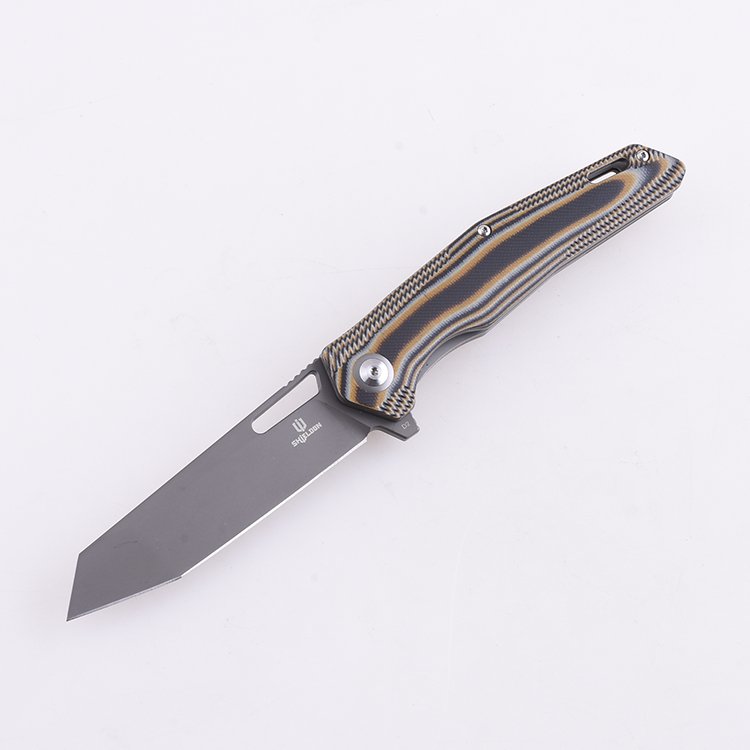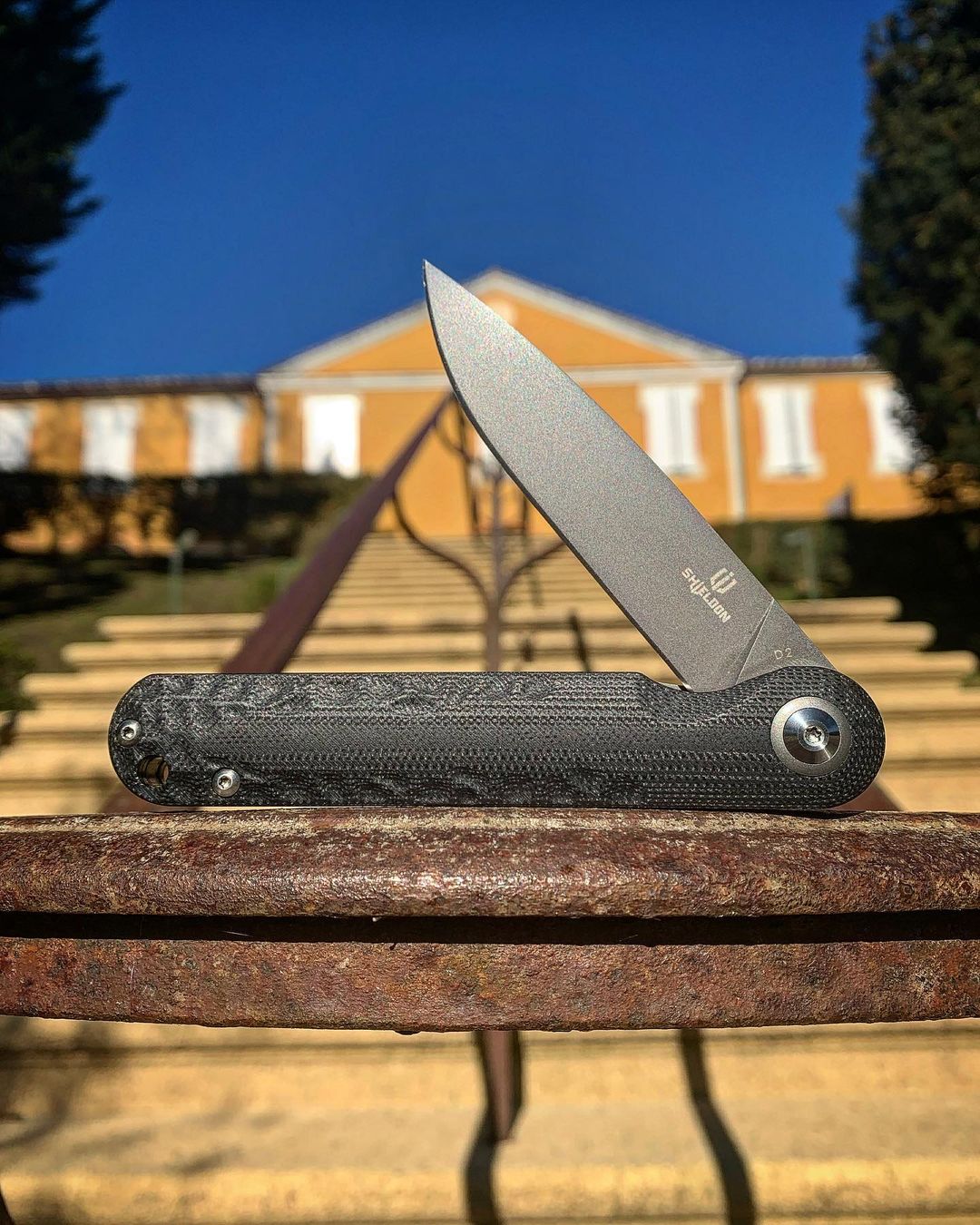Choosing the Right Hunting Knife: Factors to Consider

Hunting is an exciting activity, one that’s practiced by many people who live in areas that have wild animal populations. Although there are rules in place that regulate hunting, there are some animals whose populations are so high that the government doesn’t mind when people go out and hunt them for sport, deer for instance.
However, it may look easy on paper, but the actual hunting is not easy to pull off, even for the experienced hunter. You have to know your way around the forest, you have to know how to track the animal, and most importantly, you may be adept at handling your tools, especially the hunting knife. To help you get the right tools, we will be looking at hunting knives and the factors you have to pay attention to when purchasing them.
Types of Hunting Knives
Before diving into the qualities you need to be paying attention to when selecting hunting knives, it is vital that you understand the types of hunting knives available and the functions they are used for. There are about six different types of hunting knives, and they are different from each other in terms of shape and purpose. They are the following.
Camp Knife

This is the most common type of hunting knife that people usually carry with them when they go out in the wild. The classic hunting knife shape includes a handle with a solid grip and a strong blade that can be tucked into the handle when not in use. The camp knife’s purpose is cutting ropes to set up tents, splitting small wood into kindling, batting the firewood up, and so much more; there’s simply nothing that a camp knife can’t do. When it comes down to hunting down your dinner, the camp knife will come in handy in gutting your kill and getting rid of all the waste before cooking. It is small and portable and can be tucked away into the pocket for safekeeping.
Bowie Knife

This is a type of hunting knife that’s double-edged at the tip and is very handy when it comes to burrowing into things like wood or even crewing bots into their holes if you happen to forget your screwdrivers. The bowie knife used to be very popular in the 19th and 20th centuries, and although its use has gone down in recent years, it is still a handy knife to carry with you when going out to hunt for small animals. On top of helping you with animals and structures, the knife is capable enough to give you a good defense if you are in a life-threatening situation, like an attack by a wild animal or when you are accosted by thugs. People will think twice before jumping you once you brandish it.
Boning Knife

A boning knife is designed to take the meat off the bone once you've made your kill. It is a convenient knife that is narrow, lightweight, and fits into the palm of the hand snuggly, giving the user the leverage they need to cut off meat from the bone easily without any struggle. At the same time, the pocket knife is versatile and can be used for other functions like in the kitchen and self-defense if it all comes down to the wire. Boning knives are lightweight and portable; you can keep them in your pocket where you can reach for them quickly when the need for them arises.
Caping Knife

If collecting animal trophies is your kind of thing as a hunter, then the caping knife is exactly what you need in your hunting toolbox. It is adept at slicing through an animal cleanly without leaving any visible marks on the skin. For this reason, the knife is designed with an upturned point that rests on a very sharp and thin blade for easy movements and turning. For the best efficiency, go for a caping knife that has a shorter blade and a longer knife handle to increase the leverage when handling it with one hand.
Buck Knife

This is a traditional hunting knife that has been around for ages, and it is based on a design that was popularised in the early 1960s that was sold under the name Buck Knives. It is a large knife that is used for hunting big game and sports a very shaped blade that can cut through any hide without any hitches. The buck knife is a fixed blade and a bit bulky, two of the reasons why it is rare to see a hunter carrying it around with them. You will need a knife holster to keep it when not in use. But as far as functionalities are concerned, the knife handles its business well.
Skinning Knife

A skinning knife does exactly that, skinning the hide off the animal after a successful hunt. It is designed to get under the skin without rupturing the flesh and it takes great skill before you are able to master operating with it. It is usually short and has a razor-sharp blade that cuts into the skin easily to create a starting point for skinning. They come with some of the best handles that allow the handler to have a firm grip, no matter how sweaty or clammy their palms may get in the process.
What to Consider when Selecting a Hunting Knife
As already illustrated, hunting knives come in varying styles, shapes, and sizes depending on the purpose they were designed for. This can make finding the right hunting knife quite a hassle because the market is full of all knife manufacturing brands, each claiming to be the best. To help you navigate this tricky phase, the following are some of the things you have to keep in mind when shopping around for a hunting knife.
Fixed vs. Folding

Hunting knives can either be fixed or folding. The two may be the same in terms of functionality, but they're worlds apart when it comes to design and handling. Fixed blade knives are those that cannot be snapped into a sheath. The blades are fixed into the handle, and unless you get an extra cover for them, they remain in that position for as long as you need them. Folding knives, on the other hand, can be snapped back into a concealed sheath, making them much more tractable and easy to carry around.
Casual and hobbyist hunters prefer folding knives owing to the convenience they bring to the table and the fact that they are not that complicated. On the other hand, seasoned hunters prefer the fixed blade as it is bigger, stronger, sharper, and it can be used for a wide range of heavy-duty activities. The only drawback is that you have to get a separate sheath for them as they cannot be thrown into the bag with cutting down things.
Shape of the Blade

The shape of the blade determines how the blade is used. In general terms, there are about three distinct shape blades associated with hunting knives. The first one is the drop-point blade that has a convex shape characterized by a gentle curve on the outer part of the knife. Convex-shaped hunting knives are good for cleaning and skinning animals.
The second shape is the straight knife which is the most common. It is a knife that juts out from the handle, straight out to the tip of the blade, and is ideal for handling the harder jobs of hunting like piercing through tough hide and dealing with tent ropes and the likes.
The third shape is the concave shape, where the blade curves upwards like a scimitar. Bases that are shaped in this manner are mostly used for skinning animals because they are fast, and they get under the skin without rupturing the meat, ensuring a cleaner job for the hunter. Decide on the role you want for a hunting knife, then choose the one that fits you best from these three shapes.
The Handle

The texture of the knife’s handle is the difference between having a knife that works as it should and having serious injuries. One common thing that many hunting knives share is that they have short blades and handles that are a little longer. The reason for this is to provide the hunter with enough leverage to thrust the knife deep into the body of the animal for the best results. However, if the texture of the handle is shoddy, it is easy for the hand to slip, leading to serious cuts. A good hunting knife should not have you fight to maintain the rib on the blade; it should have enough treads and grooves to allow the hand to maintain a firm grip even when covered in sweat or the animal’s blood.
Portability

Portability has a lot to do with the length, the weight, and the ability of the knife to be folded into its sheath. If you are looking for the convenience of carrying a hunting knife then a foldable one would be the best option for you. This can be hidden away in the pocket as they are smaller and weigh much less than fixed blades. The only way you can carry around a knife with a fixed blade would be to buy a separate sheath to hold it, and they still can’t fit into your pocket, you will need to carry them in a bag or have them fastened to a holster around your waist, that sounds like too much work.
Sharpness

All hunting knives come sharpened well enough, but not all maintain that sharpness for long after the purchase. You have to make sure you are buying a hunting knife that will last you a long time before you start thinking of sharpening them again. The longevity of the knife’s sharpness depends on the raw material used to craft the blade. Carbon steel, for instance, is much more durable than stainless steel. You also have to be aware of replaceable blades. Some types of hunting knives allow the users to replace the blades once they have been sued beyond help. Generally, going for the blade with the strongest material is the best choice where sharpness is concerned.
The Price

Hunting knives don’t come cheap because they are not your regular domestic knives you have in your kitchen. There’s a lot of engineering that goes into their design, and this involves the use of high-quality materials like carbon steel, and this eventually adds to the final price tag. When it comes to hunting knives, you get what you pay for. The cheaper the hunting knife, the higher the likelihood that you’ll be needing a new one within a year.
However, this doesn't mean you have to start breaking your bank for a hunting knife, there are many ways you can use to get bargain deals, and you just might land a high-quality knife for peanuts. Check out third-party sites every chance you get to see if they have good hunting knife deals.
Conclusion
So here you have it, a detailed analysis of hunting knives and what it takes to get the right one. Hunting is a good way to spend your free time but to get the best experience; you have to go prepared and armed to the teeth. A customized hunting knife should never miss from your hunting bag because it handles more than just killing and skinning the animal.
If this is your first hunting rodeo, make sure you check out our website to go through some of our exciting hunting knives offers that you may need for your maiden hunting trip. Feel free to drop us any question, and our team of dedicated experts will be there to answer them all.

